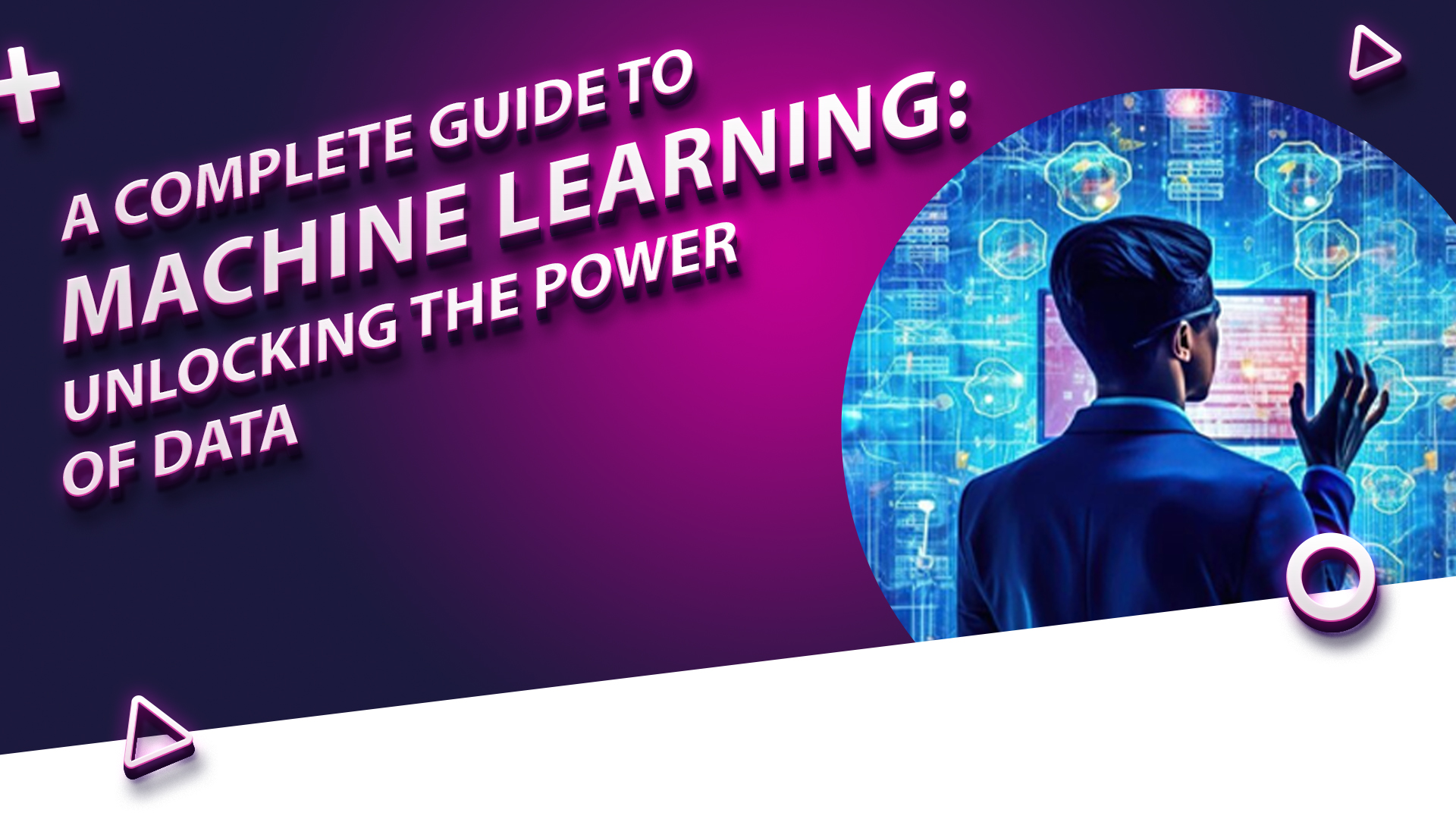Machine Learning (ML) is revolutionising industries across the globe by harnessing the power of data to make informed decisions and predictions.
In this comprehensive guide, we will walk you through the fundamentals of Machine Learning, its types, applications, and how you can get started on your ML journey.
Understanding Machine Learning:
At its core, Machine Learning is a subset of artificial intelligence (AI) that enables systems to learn and improve from experience without being explicitly programmed. It relies on algorithms that allow computers to identify patterns and make predictions or decisions based on data.
Types of Machine Learning:
a. Supervised Learning: In this approach, the model is trained on a labelled dataset, where the input data and corresponding output are provided. The goal is for the model to learn the mapping between inputs and outputs to make predictions on new, unseen data.
b. Unsupervised Learning: Unlike supervised learning, unsupervised learning deals with unlabeled data. The algorithm explores the data to find patterns and relationships without explicit guidance on the output.
c. Reinforcement Learning: This type involves an agent that learns to make decisions by interacting with an environment. The agent receives feedback in the form of rewards or penalties, guiding it to improve its decision-making over time.
Machine Learning Applications:
a. Healthcare: ML is used for disease diagnosis, drug discovery, and personalised treatment plans, improving overall patient care.
b. Finance: In the financial sector, ML aids in fraud detection, risk assessment, and algorithmic trading, enhancing decision-making processes.
c. Marketing and Sales: ML helps businesses analyse customer behaviour, optimise pricing strategies, and personalise marketing campaigns for better customer engagement.
d. Autonomous Vehicles: ML is a key component in developing self-driving cars, enabling them to perceive their surroundings and make real-time decisions.
Steps to Start with Machine Learning:
a. Learn the Basics: Familiarise yourself with key concepts such as algorithms, data preprocessing, and model evaluation.
b. Choose a Programming Language: Python is widely used in the ML community due to its extensive libraries (e.g., scikit-learn, TensorFlow, PyTorch) and ease of use.
c. Understand Data: High-quality data is crucial for ML success. Learn to clean, preprocess, and explore data to extract meaningful insights.
d. Select a Model: Depending on your problem, choose a suitable ML model. Start with simpler models and gradually explore more complex ones.
e. Train and Evaluate: Train your model on a portion of the data and evaluate its performance on unseen data. Fine-tune the model for better results.
f. Stay Updated: ML is a rapidly evolving field. Stay informed about the latest developments, tools, and techniques.
Machine Learning is a powerful tool transforming industries and driving innovation. Whether you're a beginner or an experienced professional, this guide provides a solid foundation to embark on your Machine Learning journey. By understanding the basics, exploring different types of learning, and applying ML in various domains, you can unlock the potential of data to make informed decisions and contribute to the exciting field of Machine Learning.





Leave a reply